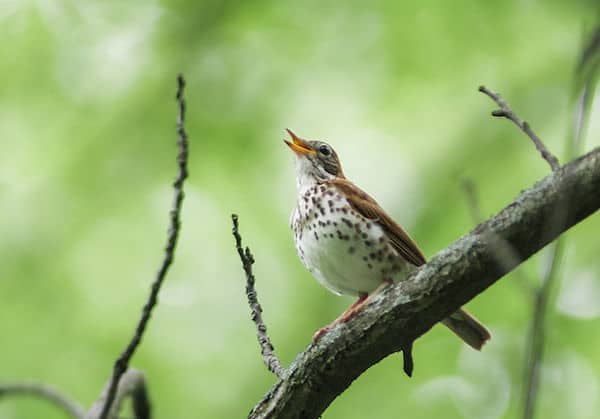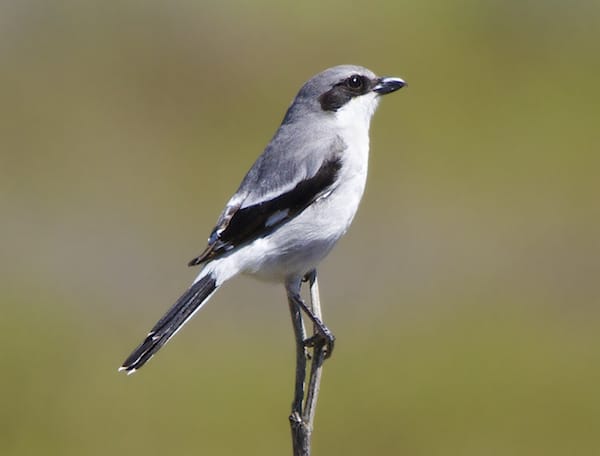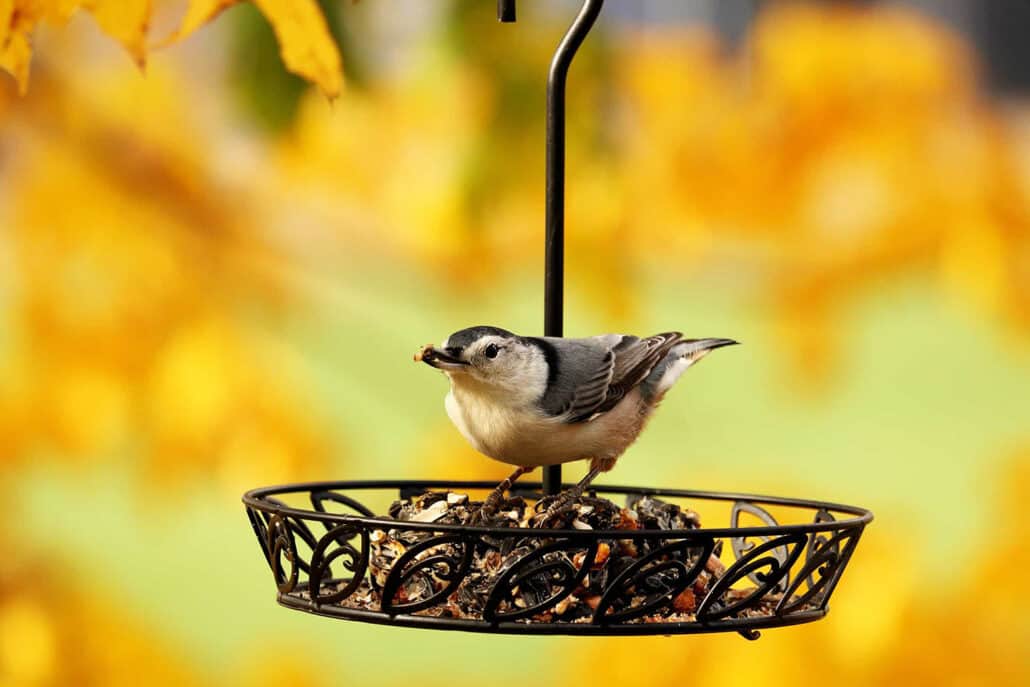Look for
This medium-sized (7 ¾ inches in length) brown thrush has a bright rufous head and neck, olive-brown back and tail, and a white breast with large dark spots.
Listen for
The lilting flute-like song of the wood thrush inspires bird watchers, naturalists, poets, musicians, and humankind in general. Few things are more beautiful than the evening song of the wood thrush as it echoes from deep within the forest. Erect and robin-like in its posture, the wood thrush sings a multi-pitched and highly variable eeeolay song and utters a whit-whit-whit call when agitated. Wood thrush males do most of their singing at dawn and dusk, and usually from a midlevel perch in the forest.
Find it
Wood thrushes only spend their summers with us in eastern North America, arriving as early as April, but departing for the tropics by mid-August or later. Many make the flight across the Gulf of Mexico in both spring and fall. During the breeding season, they can be found in mixed deciduous forests with tall trees and a thick understory. Fragmented forest plots or those with cleared understory (due to deer browsing or human landscaping) are far less attractive to wood thrushes.
Feed it
Feeding much like a robin on the forest floor, the wood thrush sweeps aside leaf litter with its bill to uncover insects, larvae, millipedes, moths, ants, and even salamanders and snails. In fall, wood thrushes will feed in forest edge habitats to take advantage of fruits and berries.
Nesting Behavior
The female wood thrush builds a cup-shaped nest out of grasses, leaves, and rootlets, usually held together with mud, in the fork of a tree branch within 20 feet of the ground. She lays three to four eggs and incubates them for about 12 days before they hatch. Young wood thrushes are ready to fledge two weeks later. Wood thrush nests in fragmented forest habitats are more likely to be parasitized by the brown-headed cowbird, which does not build its own nest, but rather lays its eggs in the nests of other songbirds—often at the expense of the host species.
WOW!
Forest fragmentation has really hurt the Wood Thrush, allowing nest predators easier access to nests deep in woodlands. As a result, Wood Thrush populations are in decline.




